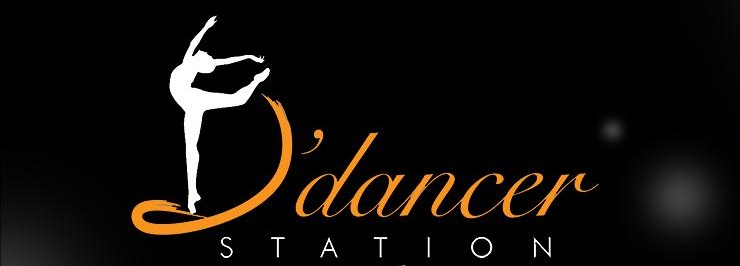There has always been much fascination about the history of belly dance, or in the community of belly dancers, it is preferred to be referred to as the Middle Eastern Dance or Raks Sharki (the Oriental Dance in Arabic). The origin is fiercely debated as there are no concrete evidences that support on the claims made. However, many believed that belly dance is one of the oldest dance-form dated back from as far as the fourteenth century BC where evidence of the dance are shown at the Egyptian tomb paintings and at the Persian miniature paintings from the 12th and 13th century that resemble partially clad dancers whose callisthenic positions appear to be similar to those used in belly dancing.
To many, belly dance is an ancient dance that was performed by women for women only. It was danced as part of celebration to celebrate fertility, birthing and temple rituals. Women in the olden day’s belly dance to goddess worship rituals to seek safe and smooth birthing since there wasn’t much proper medication available at that time. Some request for a gift of life. It is also believed that the wave-like movements of the belly called the undulation in belly dance terminology were used by women to help easing the birth delivery. The dance was meant for both family and social gatherings. It is passed down from mother to daughter in generations. A girl’s first performance for other women was considered as her rite of passage to womanhood.
In Arabic, the folk dance that mothered the belly dance is known as Raks Baladi. Raks meaning dance and Baladi means country. Raks Baladi is indigenous to North Africa, the Middle East and as far as Iran. However, it was Egypt that has predominantly publicized and influenced the dance. The god-mother of belly dance was Badia Masabni who owned a night club in Cairo. Badia is known to have transformed Raks Baladi into Raks Sharki (Oriental Dance) as it is known nowadays. She had trained some of the most famous belly dancers like Samia Gamal and Tahiya Carioca with ballet and jazz classes, incorporate graceful arms movements and set a stage for the dance. Her belly dance shows attracted both Middle Eastern and European audiences that were visiting Egypt in bigger and bigger numbers at that time. She had also pioneered the use of choreography and added props like veils into the dance.
It was during this time, the costuming of belly dance went into a drastic change, from the long conservative dress or skirt with a scarf accentuating the hips to beaded two piece sequin costumes majorly influenced by the Hollywood movies and European cabarets. With the booming of the Egyptian Film Industry, Raks Sharki reached a level previously impossible and belly dance stars were born that remain legendary until today.
However, due to economic, political and religious climate in Eygpt, the Raks Sharki is slowly making its decline. A law was passed in 2003 which prohibits foreign dancers from obtaining work permits, causing even deeper decline in public performance. Even though, the law has been reversed a year later, the damaged has been made.
The dance however is flourishing elsewhere, especially Turkey and Lebanon. Outside of the Middle East, more dancers are picking up the dance. We can see that belly dance is being danced everywhere in the world. The Americans has structured the dance into something that can be taught in classrooms and started the trend of formal training and workshops for the dance, as what we have seen nowadays.
Benefits of Belly Dance
- Belly dance is safe - Belly dance in its purest form is the most body-friendly dance. Their movements are gentle and natural to the body, working with it instead of against it making it a dance for everyone, no matter what dance background or body shape you have.
- Low impact exercise – belly dance is low impact. It helps increases blood circulation in the body, elevates the heart rate and is effective for weight maintenance and rehabilitation.
- Arm exercise – snake arms in belly dance provides effective toning to the arms. Practicing the arm requires dedication and effort to move the arms gracefully and naturally.
- Relieves back pain – when belly dancing is done properly, it helps to massage the back gently with the rocking of the pelvis providing relief to the back.
- Preparation for childbirth – belly dance provides an excellent prenatal exercise repertoire that helps strengthens the muscles used in child delivery. The pelvis rocking and the abdominal wave-like movements taught in belly dance are natural movements which ease the birthing process. Mothers that belly dance are also known to get in shape quickly after giving birth.
- Reduces stress– with the stressful daily life, belly dance provides means to release stress from work and home. Belly dance provides a sanctuary for women to just “let go” and enjoy themselves and just be a woman!
- Improve digestion – Belly rolls, hip sways that utilizes the abdomen muscles helps food movement in the digestive system.
- Boost self-confidence – belly dance helps women to get in touch with their femininity, inner feeling, be happy with who they are and be proud of their own body. It is always nice to see new dancers feeling more confident and beautiful after they have started belly dance for a period of time.
References:
- A Brief History of Oriental Dance, From social dance to performance art (http://www.orientaldancer.net/articles/a_brief_history.shtml)
- A Brief History of Belly Dancing, the World’s Oldest known dance form is still performed today (http://worlddance.suite101.com/article.cfm/a_brief_history_of_belly_dancing)
- Badia Masabni (http://www.belly-dance.org/badia-masabni.html)
- The Art of Belly Dancing (http://www.belly-dance.org/badia-masabni.html)
- Benefits of Belly Dance (http://hubpages.com/hub/Belly-Dance)
- Health Benefits of Belly Dance (http://www.atlantabellydance.com/ProspectiveStudents/ClassHealth.html)
- Low Impact Exercise (http://www.buzzle.com/articles/low-impact-exercise.html)
Content prepared by Dance99 at http://dance99.com.my

0 comments:
Post a Comment